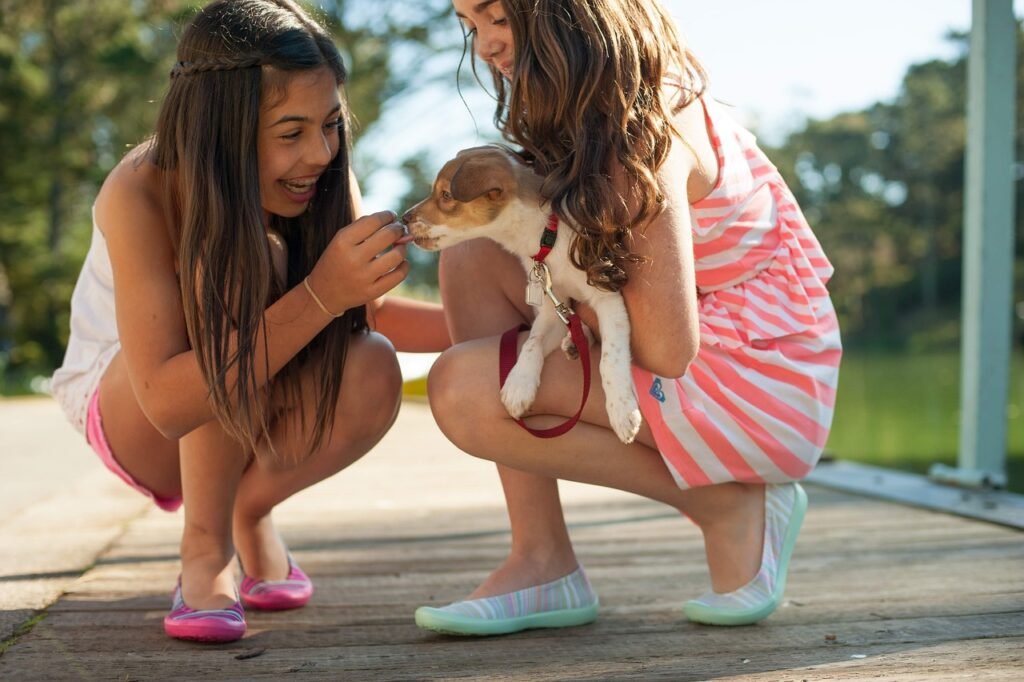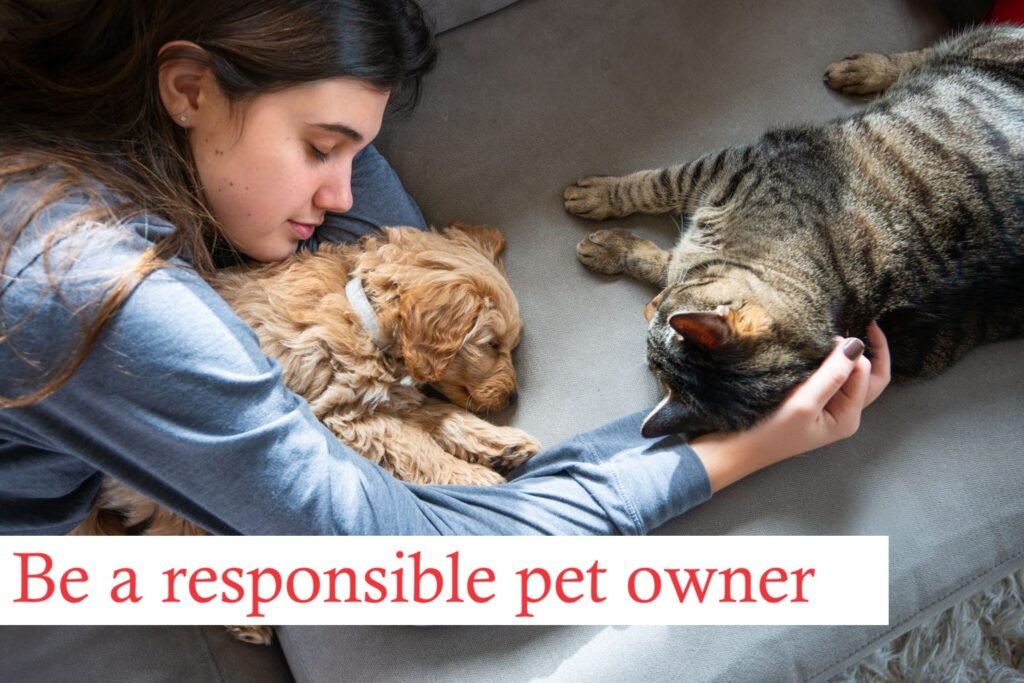Training a puppy is an exciting adventure that brings you closer to your new furry friend. If you have just welcomed a puppy into your home or are getting ready to, knowing the basics of puppy training is very important. It helps your puppy grow up well and keeps you stress-free. This simple guide will show you the key steps to help your puppy become a well-behaved and happy companion.
Understand Puppy Development
Puppies, like human babies, go through essential growth stages. Knowing these stages helps you train them better:
-
Socialization (6-16 weeks)
This is the time to introduce your puppy to different people, animals, sights, and sounds. Positive experiences now can prevent fear and aggression later. Take your puppy to parks, busy streets, and quiet neighbourhoods.
Set up playdates with other puppies and friendly adult dogs. Socialization helps your puppy feel comfortable and confident in different situations, reducing fear-based behaviours in the future.
-
Basic Obedience (8-20 weeks)
Start teaching simple commands like “sit,” “stay,” and “come.” Use treats and praise to reward good behaviour. Keep training sessions short and frequent, as puppies have short attention spans.
Focus on one command at a time and practice in different places to reinforce learning. As your puppy learns basic commands, you can start teaching more complex ones like “down,” “leave it,” and “heel.”
-
Teething (3-7 months)
Puppies chew to relieve discomfort from teething. To protect your belongings, give them appropriate chew toys. Chewing is a natural process that helps strengthen their jaws and clean their teeth.
Offer a variety of textures and shapes to keep your puppy interested. If your puppy starts chewing on furniture or other items, calmly redirect them to a chew toy and praise them for chewing on it instead.
How Can You Start Training?
Before starting training, make sure you have the right tools:
- Treats: Use small, tasty treats to reward good behaviour quickly. Treats should be simple to chew and swallow to prevent distraction for your puppy. High-value treats, like small pieces of chicken or cheese, are great for teaching new commands.
- Leash and Collar: These are important for teaching leash manners and keeping your puppy safe outdoors. Make sure the collar fits well, and the leash is sturdy. Start with short walks around your yard or house to help your puppy get used to it.
- Crate: Provides a safe space and assists with housebreaking. It mimics a den, giving your puppy a secure place to rest. Use the crate for naps and bedtime, but never as a punishment. The crate should be big enough for your puppy to stand up, turn around, and lie comfortably.
- Clicker (optional): Using a clicker to mark good behaviours speeds learning. The clicker sound is consistent and clear, allowing your puppy to associate it with rewards. Right after your puppy does something good, click and treat.
Basic Training Techniques
Positive Reinforcement:
- Reward your puppy right after they do something good. This helps them learn to repeat the action.
- To encourage positive behaviours, use treats, verbal praise, and petting. Avoid punishment, which can cause fear and anxiety, making learning harder.
Consistency:
- To avoid confusing your puppy, keep the same rules and routines.
- Everyone in the household should use the same commands and methods. For instance, if you use “down” to lie down, don’t use “off” for the same action.
- Consistent, such as not allowing the puppy on the furniture, help them understand what you expect.
Patience:
- Puppies are like toddlers—they need time to learn and will make mistakes.
- Stay patient and avoid punishment, which can slow their progress.
- If your puppy doesn’t understand a command, try breaking it down into smaller steps or changing your approach.
Essential Training Commands
- Sit: Hold a piece of treat close to your puppy’s nose, then slowly raise it above their head. Their bottom will naturally lower as they follow the treat with their heads. When they are sitting, reward them and repeat. To help them learn, consistently use the command “sit” and practice in different locations.
- Stay: Start with the sit command, then add a “stay” cue while showing an open hand in front of their face. Gradually increase the time before giving a reward. At first, stay close to your puppy and slowly increase the distance. Always return to your puppy before releasing them from the stay command.
- Come: Use a happy tone and back away from your puppy while calling their name, followed by “come.” Reward them well when they reach you. Practice this command in a safe, enclosed area, and gradually introduce distractions to make sure they learn to come reliably.
Addressing common challenges
Housebreaking:
Take your puppy outside often, especially after meals and naps. To reinforce good habits, reward them when they go potty outside. Stick to a regular schedule and use the same spot each time to create a routine. Monitor your puppy indoors to prevent accidents, and utilize a crate to aid bladder control training.
Chewing:
Give your puppy lots of chew toys and redirect them if they start chewing on something they shouldn’t. Ensure your home is puppy-proof by securing or removing items they might chew. Supervise your puppy, and use baby gates to keep them away from areas where they shouldn’t be.
Jumping:
Ignore jumping and reward calm behaviour instead. Teach your puppy to sit as a polite greeting. If your puppy jumps, turns away, or steps back, only pay attention when they have all four paws on the ground.
Advanced Training Tips
-
Leash Training:
Before going outside, gradually introduce the leash indoors. Reward your puppy for walking calmly beside you. Begin with short walks and increase the distance as your puppy becomes more comfortable. If your puppy pulls on the leash, stop walking and wait until they settle down before continuing.
-
Socialization:
Introduce your puppy to various environments, people, and animals in a controlled manner to boost its confidence and prevent fear. Plan playdates with other dogs and take your puppy to places like parks and pet-friendly stores. Watch their reactions and use positive reinforcement for calm behaviour.
-
Problem Solving:
Use positive reinforcement to deal with specific behaviours like barking or digging. If needed, seek advice from a professional trainer. Find out why your puppy behaves a certain way and provide appropriate activities, like toys and exercise, to reduce unwanted behaviours.
Conclusion
Training your puppy needs dedication, patience, and doing things regularly, but the results—a well-behaved friend—are excellent. As each puppy is unique, adjust your training to suit their personality and performance. With these techniques and lots of love, you’ll give your puppy a great start to a happy life as a beloved family member. Enjoy training your puppy!



